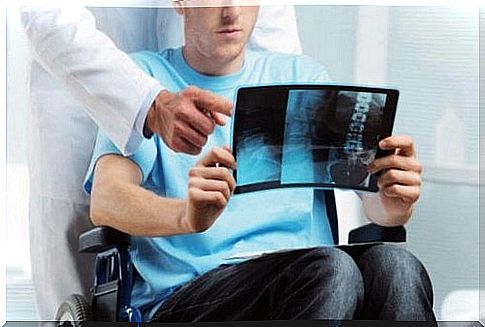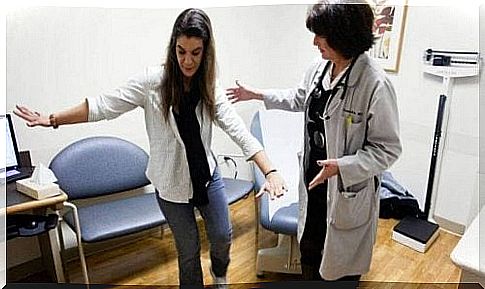Multiple Sclerosis: Causes, Symptoms And Treatment

Multiple sclerosis is a chronic disease of the central nervous system. It is found worldwide and is the most common cause of neurological damage in young or middle-aged adults, especially in women.
A material made up of proteins and fats called myelin normally facilitates the flow of electrical impulses between the fibers of the central nervous system that it envelops and protects. In multiple sclerosis, myelin is lost in different areas, sometimes leaving scars (sclerosis). These damaged areas are also known as demyelination plaques.
Myelin not only protects nerve fibers: it also facilitates their function. If the myelin is destroyed or damaged, the ability of the nerves to conduct impulses is drastically reduced. Fortunately, myelin damage is reversible in many cases.

What is the cause of multiple sclerosis?
Multiple sclerosis is of unknown etiology. Its cause is not clear and several mechanisms have been reported. Among them are immune, hereditary and infection factors.
The exact role of early viral infection and maintenance of multiple sclerosis is unknown. Several viruses have been studied in connection with this disease. It was linked to the Epstein-Barr virus with demyelination (loss of myelin). In children, there is evidence of vulnerability to this virus.
Among environmental factors, viruses are the most studied agents as triggers or determinants of disease. Viruses are suspected of acting on oligodendrocytes, modifying them during childhood and subsequently creating an abnormal immunological response (by altering the correct myelination).
The genetic predisposition seems clear. In studies of univitelline twins, it has been shown that the risk of suffering from multiple sclerosis is 31%, while in dizygotes the risk is around 5%.
Symptoms of multiple sclerosis
The first symptoms may be so mild that the person may not necessarily feel the need to see a doctor. The most common are weakness in one or more of the limbs, blurred vision, altered sensitivity, double vision (diplopia) and difficulty coordinating movements (ataxia).
Weakness in the extremities is also typical, with fatigue after exercising, difficulty climbing stairs, loss of skill and increased muscle tone. These symptoms normally appear gradually.
Fatigue, the most common symptom
Fatigue is the most common symptom of multiple sclerosis, affecting two-thirds of patients. Half of these describe it as the most unpleasant sensation, which visibly affects the quality of life.
Fatigue further and dramatically reduces the quality of life for people with multiple sclerosis. Therefore, this is a factor to take into account. It is difficult to manage and interpret due to the subjectivity of perception.
The loss of energy affects both motor and cognitive skills and includes difficulty concentrating. It is therefore necessary to make a differential diagnosis of fatigue caused by multiple sclerosis with diseases such as depression, motor disorders, thyroid pathology, side effects of drugs such as antispasmodics and immunosuppressive agents.

Appearance of relapses
A typical thing of multiple sclerosis is the appearance of relapses (relapse, recurrence, exacerbation). Flare-ups are symptoms of neurological dysfunction that last for more than 24 hours.
To know that these flare-ups are real, they must affect different parts of the central nervous system and be separated by a period of time of at least a month. This disappearance of symptoms is defined as remission, improvement or disappearance of characteristic symptoms and signs lasting at least 24 hours.
Auxiliary symptoms
There is a group of ancillary symptoms which, when clinically expressed, support the diagnosis of multiple sclerosis. Here they are :
- Lhermitte’s symptom: is characterized by a sensation of electric shock that runs through the entire spine. It sometimes reaches up to the arms or legs. This sensation occurs when the person leans their neck forward.
- Sensitivity to heat.
- Uhthoff phenomenon: clinical worsening linked to the rise in body temperature, whether caused by external factors (summer, hot water shower, tobacco) or internal factors (fever, intense exercise, menstruation).
- Paroxysmal attacks: Paroxysmal movement disorders are those that present themselves suddenly and intermittently, with normality or at least an absence of abnormal intercurrent movements. They are infrequent and have a high family incidence. The most common form is paroxysmal dystonia.
Multiple sclerosis treatment
Unfortunately, there is currently no treatment that can cure the disease or positively influence its clinical course. In the long term, the goal is to try to decrease the number of relapses, the sequelae and the progression of the handicap. To do this, we simply use immunosuppressants (azathioprine, cyclophosphamides, methotrexate) and interferons (alpha).
Also, for the treatment of relapses, high doses of corticosteroids are used for short periods of time (3-5 days). Correct identification of the flare is crucial in order to be able to establish the diagnosis and establish a treatment plan.
The symptomatology of the flare is the expression of one or more lesions resulting from an inflammatory process localized in the central nervous system. Its treatment is therefore focused on controlling the inflammatory process, especially with corticosteroids.
Treatment of symptoms
Symptomatic treatment can be summarized as follows:
- Spasticity: baclofen, diazepam, dantrolene sodium …
- Fatigue: amantadine, modafinil, methylfenidate …
- Pain: carbamazepine, phenytoin, gabapentin, pregabalin …
- Bladder hyperreflexia: oxybutynin, bethanechol …
- Cognitive deficit: donepezil, beta interferon, memantine …

Rehabilitative treatment
Rehabilitative treatment is of great importance and has the fundamental aim of preventing the handicap and impairment of the patient or, at least, reducing them as far as possible.
The patient must be taught new skills and his healthy systems strengthened. In this way, he will be able to maintain some dependence. For this, it is essential to adapt or modify the social and professional environment of the patient. In addition, psychological support for education and support for the patient, family and caregivers is essential.
It is recommended to carry out an adequate multidisciplinary rehabilitative treatment at the evolutionary moment of the person suffering from multiple sclerosis because it can improve the quality of life related to health and functionality in the activities of daily living. Many organizations of people affected by multiple sclerosis benefit from this type of treatment focused on full rehabilitation.








